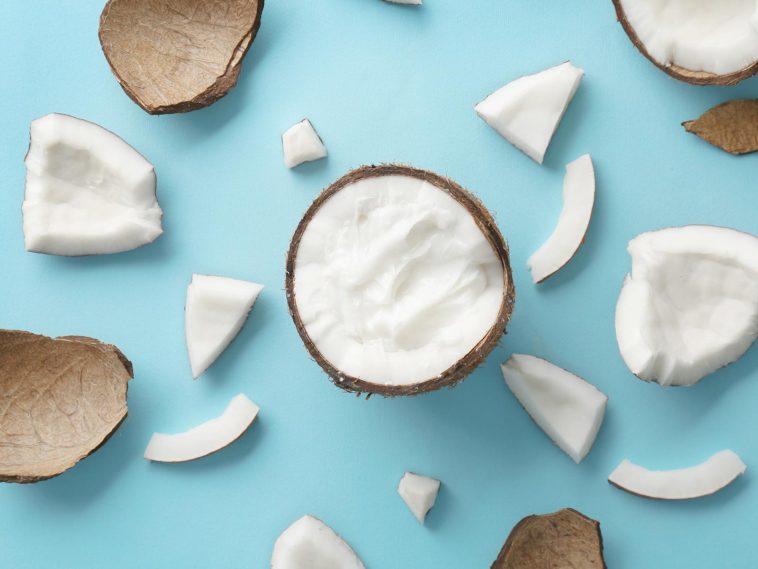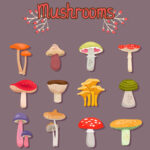Everything you need to know about cooking Coconuts, including the different types of coconut and the difference between coconut oil/cream/milk. Coconut is a popular ingredient in paleo/main food and native to cooking, and for good reason: coconuts are loaded with healthy fats and are sturdy on the shelf. Its soft texture is perfect for cooking without dairy products. I’ll explain this in more detail and then break it down into a coconut version… a kind of coconut-friendliness encyclopedia.
What is Coconut?
Just like the two previous ingredients, almonds and prunes, coconut is actually a fruit known as tortoise. Turtles have seeds and a fruit exterior. The woody coconuts found in food have been removed from the fruit and are often sold as seeds.
Coconut varieties
Okay, let’s split it into two parts.
Variants of coconut that you can buy at the store:
- Young coconuts: They have a green or white shell. They contain a lot of water and the meat is very tender.
- Ripe coconut: This is the classic brown, hairy coconut. They have less water and tougher meat, but contain more calories and nutrients than young coconuts.
Variations of coconut products used in cooking:
Water: This is water that comes straight out of the coconut and is refreshing with a touch of coconut.
Canned milk: Coconut milk, on the other hand, is made by pressing the flesh of the coconut and mixing it with a little coconut water. Try to buy cans that only contain coconut and water as ingredients and avoid stabilizers like guar gum.
Cream: Made by squeezing coconut flesh. It is very thick and is usually packaged in a jar or plastic bag. You can also put it in a trench by refrigerating a can of high-quality coconut milk overnight and then removing the hard layer that has built up on top.
Milk in a carton: This is more of a drink than a cooking ingredient. It’s drenched in water and often has extra stabilizer in it, so I highly recommend this for making smoothies and drinking.
Butter: Made by pressing dry coconut. It’s really high in saturated fat (which contributes to “bad cholesterol”) so use it sparingly to add a nice coconut flavor to your diet.
Shredded or Grated: It is simply meat that is grated or shredded into small pieces and dried. They often come either sweet or unsweetened (I usually add unsweetened so I can use them in savory dishes too)
Flour: The fat is removed from the meat, then the meat is dried and ground into flour. It’s delicious for a paleo recipe and gluten free!
How to open a coconut?
If you have a hammer, it’s easy (otherwise you look like me, the new girl in our apartment complex, outside in your pajamas, throwing coconuts on the floor and praying it opens up for Pete’s love).
But I digress, take the hammer. Find three points on the coconut, call it the North Pole. Hit your hammer on the bowl firmly around the equator of your coconut until you hear a satisfying “crack”. Open your coconut, drop some water in a bowl and enjoy!
Coconut flavor blend
My first port of call when writing recipes is always my reliable vegetarian Bible, which lists which ingredients are used. Here are some ingredients that go well with coconut. You can use it as a starting point for your own cooking experiments!
- chocolate
- Mango
- Lemon and lime
- Sweet potato
- Rice
- Carrot
Coconut Nutrition Information
per 1 cup (80 g) raw grated coconut
- Calories: 282
- Carbohydrates: 12 g
- Dietary fiber: 7 g, 29% of daily value (DV)
- Protein: 3 grams
- Fat: 27 grams
60% DV Manganese: A trace element that plays a role in healthy brain and nervous system function.
11% DV iron: The main component of hemoglobin, the protein that makes red blood cells and carries oxygen throughout the body. It’s not a fringe source, which means it doesn’t come from an animal. It is not absorbed as well as heme iron.
119% DV saturated fat: These are “bad fats” that contribute to high blood cholesterol and a higher risk of heart disease. This high percentage of saturated fat means you should use coconut oil sparingly (only if you want the flavor), not all the time. Try oils that are high in unsaturated fats, such as saffron or canola oil.
PS Fun Fact: In some parts of Southeast Asia, they train monkeys to climb and pick coconuts. Just that. I think you should know.




GIPHY App Key not set. Please check settings